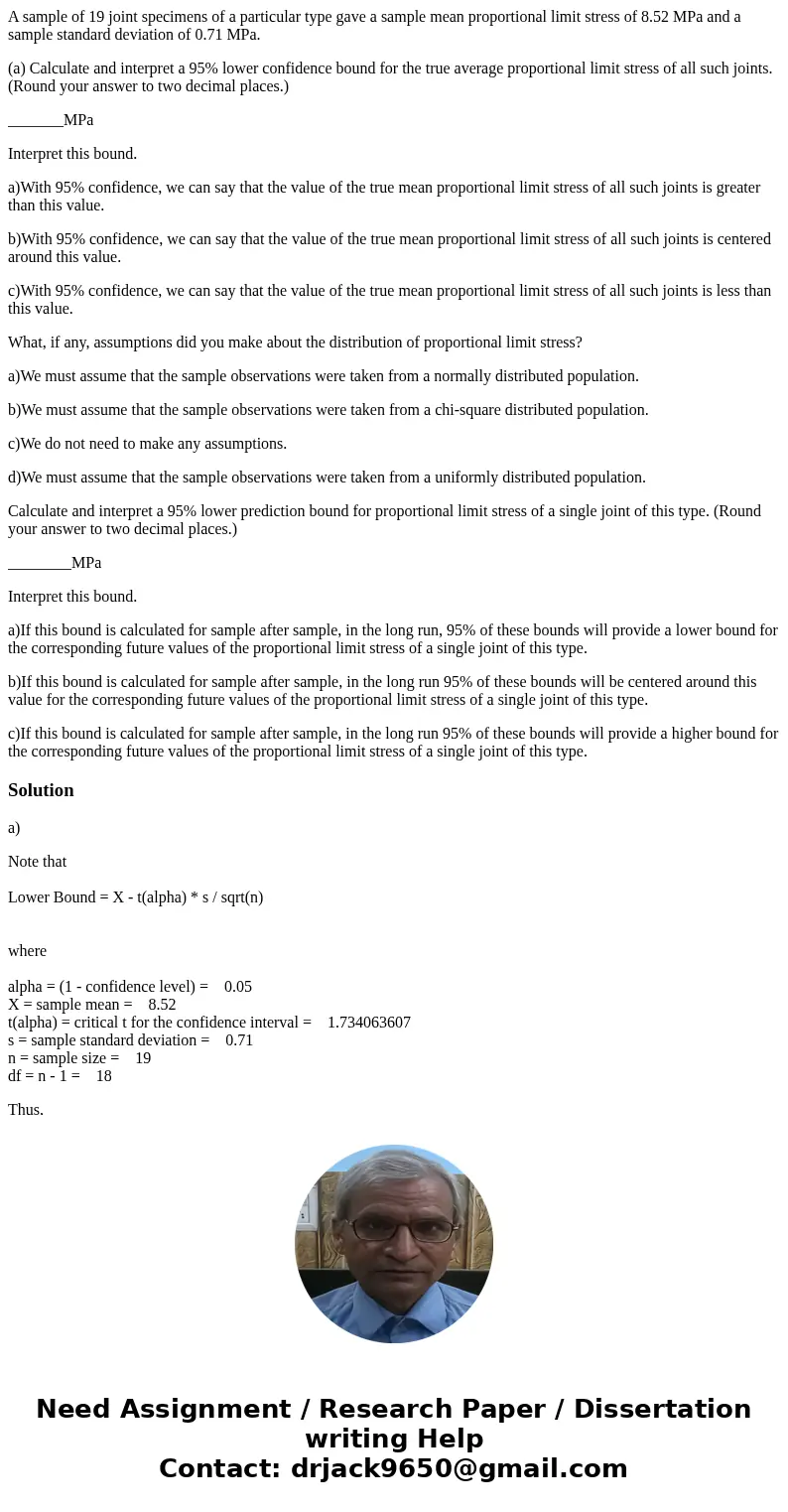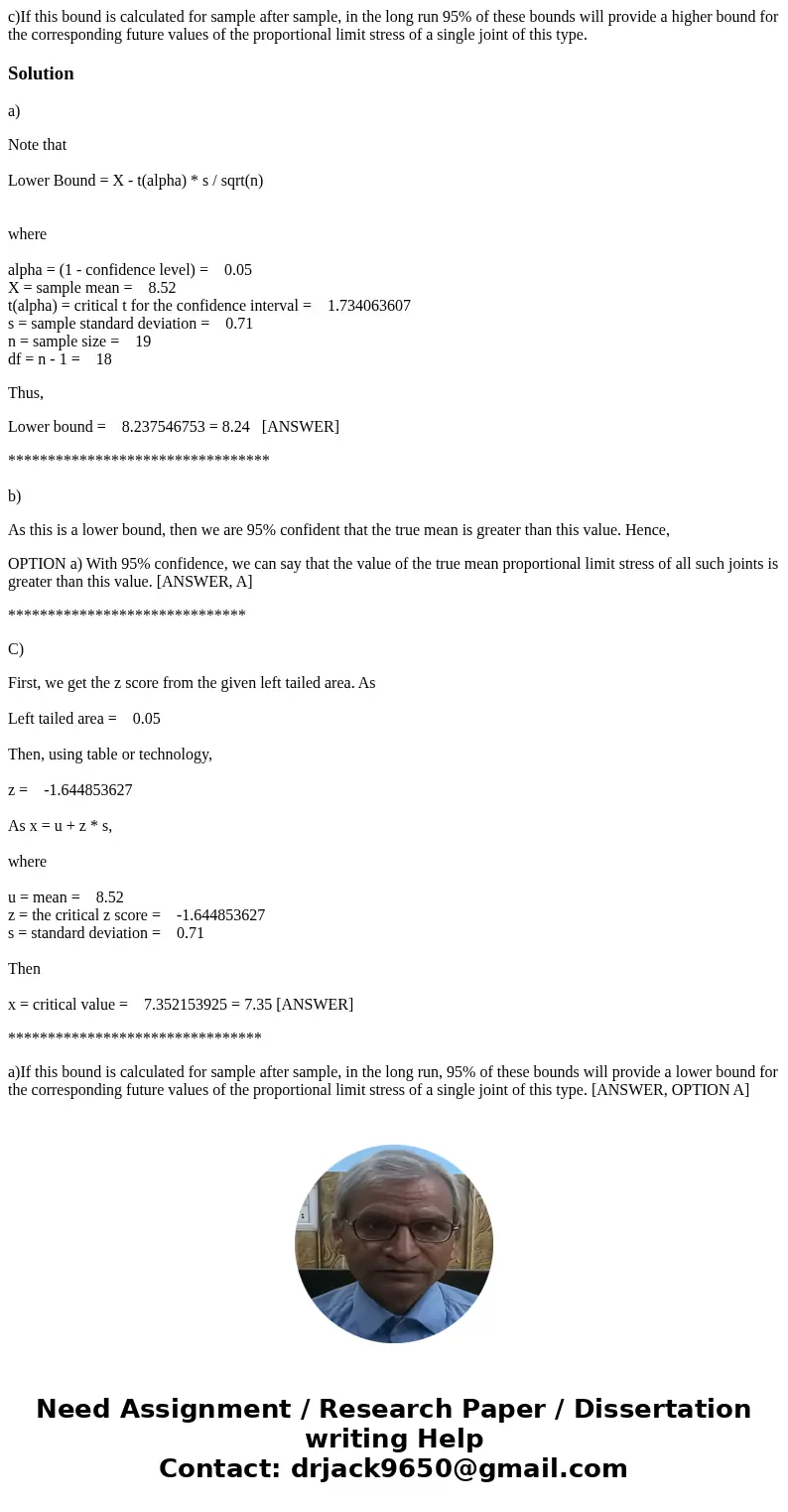A sample of 19 joint specimens of a particular type gave a s
A sample of 19 joint specimens of a particular type gave a sample mean proportional limit stress of 8.52 MPa and a sample standard deviation of 0.71 MPa.
(a) Calculate and interpret a 95% lower confidence bound for the true average proportional limit stress of all such joints. (Round your answer to two decimal places.)
_______MPa
Interpret this bound.
a)With 95% confidence, we can say that the value of the true mean proportional limit stress of all such joints is greater than this value.
b)With 95% confidence, we can say that the value of the true mean proportional limit stress of all such joints is centered around this value.
c)With 95% confidence, we can say that the value of the true mean proportional limit stress of all such joints is less than this value.
What, if any, assumptions did you make about the distribution of proportional limit stress?
a)We must assume that the sample observations were taken from a normally distributed population.
b)We must assume that the sample observations were taken from a chi-square distributed population.
c)We do not need to make any assumptions.
d)We must assume that the sample observations were taken from a uniformly distributed population.
Calculate and interpret a 95% lower prediction bound for proportional limit stress of a single joint of this type. (Round your answer to two decimal places.)
________MPa
Interpret this bound.
a)If this bound is calculated for sample after sample, in the long run, 95% of these bounds will provide a lower bound for the corresponding future values of the proportional limit stress of a single joint of this type.
b)If this bound is calculated for sample after sample, in the long run 95% of these bounds will be centered around this value for the corresponding future values of the proportional limit stress of a single joint of this type.
c)If this bound is calculated for sample after sample, in the long run 95% of these bounds will provide a higher bound for the corresponding future values of the proportional limit stress of a single joint of this type.
Solution
a)
Note that
Lower Bound = X - t(alpha) * s / sqrt(n)
where
alpha = (1 - confidence level) = 0.05
X = sample mean = 8.52
t(alpha) = critical t for the confidence interval = 1.734063607
s = sample standard deviation = 0.71
n = sample size = 19
df = n - 1 = 18
Thus,
Lower bound = 8.237546753 = 8.24 [ANSWER]
*********************************
b)
As this is a lower bound, then we are 95% confident that the true mean is greater than this value. Hence,
OPTION a) With 95% confidence, we can say that the value of the true mean proportional limit stress of all such joints is greater than this value. [ANSWER, A]
******************************
C)
First, we get the z score from the given left tailed area. As
Left tailed area = 0.05
Then, using table or technology,
z = -1.644853627
As x = u + z * s,
where
u = mean = 8.52
z = the critical z score = -1.644853627
s = standard deviation = 0.71
Then
x = critical value = 7.352153925 = 7.35 [ANSWER]
********************************
a)If this bound is calculated for sample after sample, in the long run, 95% of these bounds will provide a lower bound for the corresponding future values of the proportional limit stress of a single joint of this type. [ANSWER, OPTION A]


 Homework Sourse
Homework Sourse